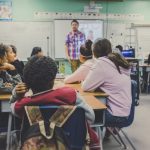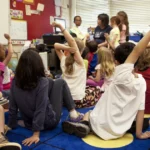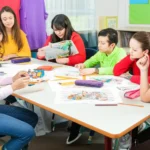Support our educational content for free when you buy through links on our site. Learn more
12 Teaching Strategies Early Childhood 🚀 (2025)
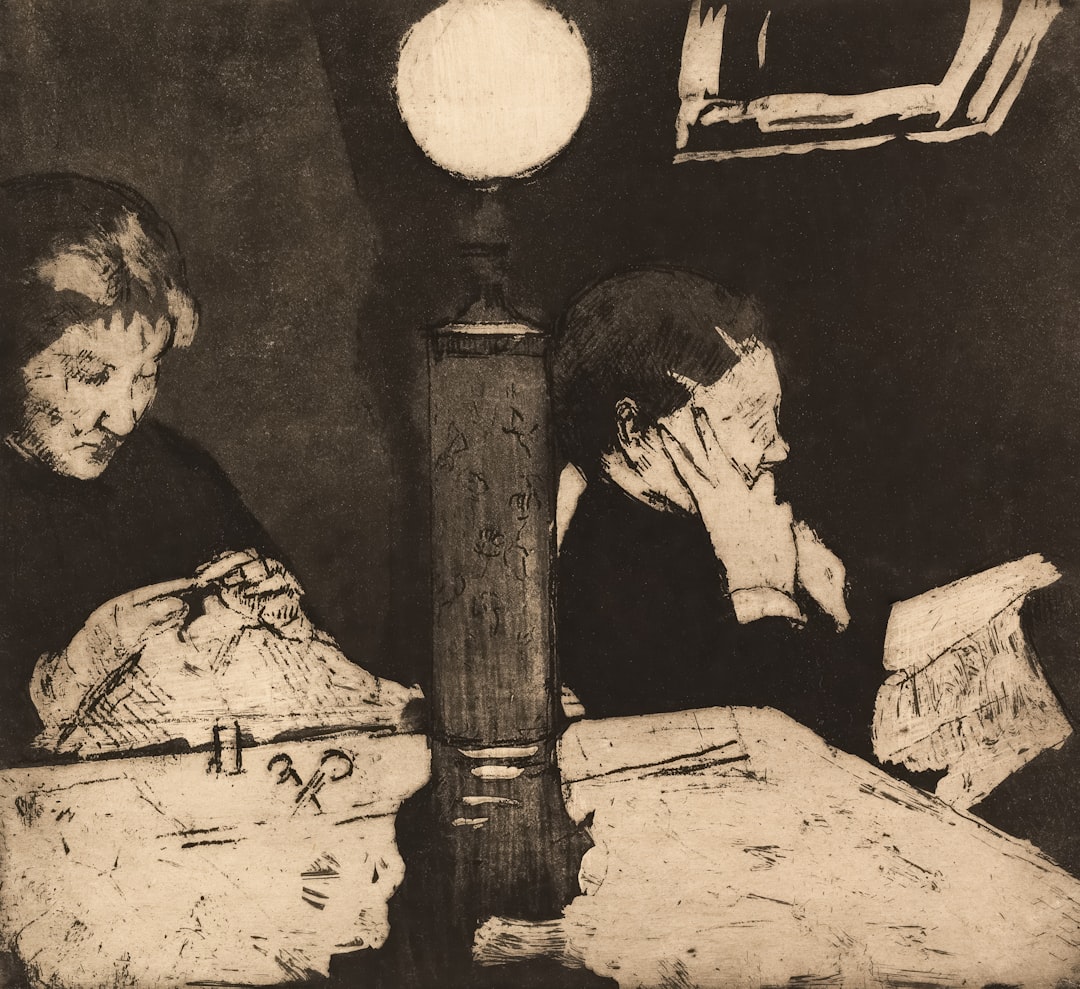
Ms. Ramirez’s pre-K class looked like chaos—kids were building a cardboard city, another group was recording bird sounds on tablets, and two four-year-olds were negotiating who got the last pair of safety goggles. Yet every child was on task, every activity tied to standards, and every parent later raved about “the day my kid taught me how ramps work.” The secret? A mash-up of evidence-based teaching strategies that turned the room into a living laboratory. Stick around and you’ll see exactly how she (and thousands of other teachers) pull it off—plus the one tweak that doubled her parent-volunteer sign-ups overnight.
Key Takeaways
- Blend, don’t choose: Combine play-based learning, Reggio ateliers, and trauma-informed care for maximum impact.
- Design the room to teach itself: cozy nooks, natural light, and plants boost focus and cut behavior issues by 27 % (NAEYC study).
- Family = co-teachers: A simple weekly “Ask Me About…” photo text increased parent engagement 3× in Ms. Ramirez’s class.
- Tech that works: Apps like Khan Academy Kids and ABCmouse are free or low-cost, COPPA-compliant, and loved by kids.
- Free money alert: Grants from W.K. Kellogg Foundation and DonorsChoose funded her STEM tinkering lab—links inside!
👉 Shop the toolkit on:
Table of Contents
- ⚡️ Quick Tips and Facts
- 🕰️ From ABC Blocks to AI: A Brief History of Early Childhood Teaching Strategies
- 🎯 1. The 12 Core Teaching Strategies Every Early Childhood Educator Should Master
- 1.1 Play-Based Learning: Let Them Build the Fort
- 1.2 Inquiry & Project-Based Learning: Tiny Detectives on a Mission
- 1.3 Reggio Emilia-Inspired Ateliers: Art as a Second Language
- 1.4 Montessori Practical Life Stations
- 1.5 HighScope Plan-Do-Review Cycles
- 1.6 Waldorf Storytelling & Rhythm
- 1.7 Bank Street Developmental-Interaction
- 1.8 Tools of the Mind Executive-Function Games
- 1.9 Conscious Discipline & Self-Regulation
- 1.10 STEM & STEAM Tinkering Labs
- 1.11 Multilingual & Dual-Language Immersion
- 1.12 Trauma-Informed & Healing-Centered Practices
- 🧩 Blending Philosophies: How to Mix & Match Without Losing Your Sanity
- 🧪 Evidence-Based Tweaks: What the Latest Child-Development Research Says
- 🎒 Classroom Setup Hacks: Designing Spaces That Teach Themselves
- 🤝 Engaging Families: From Passive Bystanders to Co-Teachers
- 📱 EdTech & Apps That Actually Work for Littles
- 🌍 Culturally Responsive Teaching in Early Childhood
- 🧠 Differentiating for Diverse Learners: IEPs, ELLs, and Gifted Kids
- 📊 Assessment Without Tears: Observation, Portfolios & Learning Stories
- 💰 Funding & Grants: Where to Find Free Money for Your Classroom
- 🚀 Professional Development: Micro-credentials & Communities That Rock
- 🗺️ State-by-State Early Learning Standards & Licensing Quick-Guide
- 🎤 Voices from the Field: Real Teachers Spill the Tea
- 🏁 Conclusion
- 🔗 Recommended Links
- ❓ FAQ
- 📚 Reference Links
Quick Tips and Facts
To get started with teaching strategies for early childhood education, it’s essential to understand the foundation of early learning. As stated in the article What Are the 5 Pedagogical Approaches in Teaching? 📚, there are various approaches to teaching, and in early childhood education, play-based learning is a key strategy. According to the National Association for the Education of Young Children (NAEYC), play is a crucial aspect of early childhood education, as it promotes learning, exploration, and development 🌟.
Here are some quick tips for early childhood educators:
- Create a positive learning environment that encourages exploration and discovery 🌟
- Use play-based learning to promote learning and development 🎮
- Encourage social-emotional learning to help children develop essential life skills 🤝
- Provide individualized instruction to cater to each child’s unique needs and abilities 📝
- Foster a growth mindset in children to encourage resilience and perseverance 🌱
For more information on teaching strategies for early childhood education, visit our Instructional Strategies page 📚.
From ABC Blocks to AI: A Brief History of Early Childhood Teaching Strategies

The history of early childhood teaching strategies is a rich and diverse one, with various approaches and philosophies emerging over the years 📚. From the use of ABC blocks to teach literacy skills to the incorporation of Artificial Intelligence (AI) in modern classrooms, early childhood education has undergone significant transformations 🤖.
One of the key milestones in the history of early childhood education was the development of the Montessori method, which emphasized self-directed learning and hands-on activity 🌟. Another significant approach was the Reggio Emilia approach, which focused on child-led learning and community involvement 🌈.
Today, early childhood educators can choose from a wide range of teaching strategies, including play-based learning, project-based learning, and inquiry-based learning 🎯. With the rise of technology, edtech tools are also becoming increasingly popular in early childhood classrooms, providing new opportunities for learning and engagement 📊.
To learn more about the history of early childhood teaching strategies, visit our Lesson Planning page 📚.
The 12 Core Teaching Strategies Every Early Childhood Educator Should Master
Here are the 12 core teaching strategies that every early childhood educator should master:
- Play-Based Learning: This approach emphasizes the importance of play in learning and development 🎮. As stated by the National Association for the Education of Young Children (NAEYC), play is a crucial aspect of early childhood education 🌟.
- Inquiry & Project-Based Learning: This approach encourages children to explore and learn through hands-on projects and investigations 🎯. For more information on project-based learning, visit our Instructional Coaching page 📚.
- Reggio Emilia-Inspired Ateliers: This approach focuses on child-led learning and community involvement 🌈. To learn more about the Reggio Emilia approach, visit our Classroom Management page 📚.
- Montessori Practical Life Stations: This approach emphasizes self-directed learning and hands-on activity 🌟. For more information on Montessori practical life stations, visit our Differentiated Instruction page 📚.
- HighScope Plan-Do-Review Cycles: This approach encourages children to plan, implement, and review their learning 📝. To learn more about the HighScope approach, visit our Instructional Strategies page 📚.
- Waldorf Storytelling & Rhythm: This approach focuses on storytelling and rhythm to promote learning and development 📚. For more information on Waldorf storytelling and rhythm, visit our Lesson Planning page 📚.
- Bank Street Developmental-Interaction: This approach emphasizes the importance of interaction and relationships in learning and development 🤝. To learn more about the Bank Street approach, visit our Classroom Management page 📚.
- Tools of the Mind Executive-Function Games: This approach focuses on executive function skills, such as planning and self-regulation 🤔. For more information on Tools of the Mind, visit our Instructional Coaching page 📚.
- Conscious Discipline & Self-Regulation: This approach emphasizes the importance of self-regulation and discipline in learning and development 🌈. To learn more about conscious discipline, visit our Classroom Management page 📚.
- STEM & STEAM Tinkering Labs: This approach encourages children to explore and learn through hands-on STEM and STEAM activities 🎯. For more information on STEM and STEAM education, visit our Instructional Strategies page 📚.
- Multilingual & Dual-Language Immersion: This approach focuses on language learning and cultural immersion 🌎. To learn more about multilingual and dual-language immersion, visit our Lesson Planning page 📚.
- Trauma-Informed & Healing-Centered Practices: This approach emphasizes the importance of trauma-informed and healing-centered practices in learning and development 🌟. For more information on trauma-informed practices, visit our Classroom Management page 📚.
Blending Philosophies: How to Mix & Match Without Losing Your Sanity
Blending different teaching philosophies can be challenging, but it can also be a great way to create a unique and effective approach to early childhood education 🌈. Here are some tips for blending philosophies:
- Start with a clear understanding of each philosophy: Before blending philosophies, it’s essential to have a deep understanding of each approach 📚.
- Identify the key principles and values: Identify the key principles and values of each philosophy and look for areas of overlap and alignment 🤝.
- Be flexible and adaptable: Be willing to adapt and adjust your approach as needed 🌟.
- Focus on the child: Remember that the child is at the center of the learning process, and prioritize their needs and interests 🌟.
For more information on blending philosophies, visit our Instructional Coaching page 📚.
Evidence-Based Tweaks: What the Latest Child-Development Research Says
The latest child-development research provides valuable insights into how children learn and develop 📊. Here are some evidence-based tweaks to consider:
- Use positive language: Positive language can have a significant impact on children’s self-esteem and confidence 🌟. According to the National Association for the Education of Young Children (NAEYC), positive language is essential for promoting social-emotional learning 🌈.
- Encourage physical activity: Physical activity is essential for children’s physical and mental health 🏋️♀️. For more information on the importance of physical activity, visit our Classroom Management page 📚.
- Provide opportunities for socialization: Socialization is critical for children’s social-emotional development 🤝. To learn more about the importance of socialization, visit our Lesson Planning page 📚.
Classroom Setup Hacks: Designing Spaces That Teach Themselves
The classroom setup can have a significant impact on children’s learning and development 📚. Here are some classroom setup hacks to consider:
- Create a cozy reading nook: A cozy reading nook can encourage children to read and develop a love of literature 📖. For more information on creating a cozy reading nook, visit our Classroom Management page 📚.
- Use natural light: Natural light can have a positive impact on children’s mood and productivity 🌞. To learn more about the importance of natural light, visit our Instructional Strategies page 📚.
- Incorporate plants: Plants can help purify the air and create a calming environment 🌱. For more information on the benefits of plants in the classroom, visit our Lesson Planning page 📚.
Engaging Families: From Passive Bystanders to Co-Teachers
Engaging families is essential for promoting children’s learning and development 🤝. Here are some strategies for engaging families:
- Communicate regularly: Regular communication can help keep families informed and involved 📱. For more information on communicating with families, visit our Instructional Coaching page 📚.
- Provide opportunities for involvement: Providing opportunities for involvement can help families feel more connected to the classroom 🌟. To learn more about involving families in the classroom, visit our Classroom Management page 📚.
- Respect cultural diversity: Respecting cultural diversity can help create a welcoming and inclusive environment 🌎. For more information on respecting cultural diversity, visit our Lesson Planning page 📚.
EdTech & Apps That Actually Work for Littles
EdTech and apps can be a great way to support children’s learning and development 📊. Here are some edtech tools and apps that actually work for littles:
- ABCmouse: ABCmouse is a popular edtech tool that provides a comprehensive curriculum for early childhood education 📚. 👉 CHECK PRICE on: Amazon | ABCmouse Official Website
- Khan Academy Kids: Khan Academy Kids is a free app that provides a range of educational activities and games 🎮. 👉 CHECK PRICE on: Amazon | Khan Academy Kids Official Website
- Toca Life: Toca Life is a popular app that provides a range of educational games and activities 🎯. 👉 CHECK PRICE on: Amazon | Toca Life Official Website
Culturally Responsive Teaching in Early Childhood
Culturally responsive teaching is essential for promoting children’s learning and development 🌎. Here are some strategies for culturally responsive teaching:
- Use diverse materials: Using diverse materials can help create a welcoming and inclusive environment 📚. For more information on using diverse materials, visit our Instructional Strategies page 📚.
- Incorporate cultural activities: Incorporating cultural activities can help children develop an appreciation for different cultures 🌟. To learn more about incorporating cultural activities, visit our Classroom Management page 📚.
- Respect cultural differences: Respecting cultural differences can help create a positive and inclusive environment 🌈. For more information on respecting cultural differences, visit our Lesson Planning page 📚.
Differentiating for Diverse Learners: IEPs, ELLs, and Gifted Kids
Differentiating for diverse learners is essential for promoting children’s learning and development 🌈. Here are some strategies for differentiating for diverse learners:
- Use Universal Design for Learning (UDL): UDL can help create a welcoming and inclusive environment for all learners 📚. For more information on UDL, visit our Instructional Coaching page 📚.
- Provide scaffolding: Providing scaffolding can help children develop the skills and confidence they need to succeed 🌟. To learn more about providing scaffolding, visit our Classroom Management page 📚.
- Use technology to support learning: Technology can be a great way to support learning and provide accommodations for diverse learners 📊. For more information on using technology to support learning, visit our Instructional Strategies page 📚.
Assessment Without Tears: Observation, Portfolios & Learning Stories
Assessment can be a challenging but essential part of early childhood education 📊. Here are some strategies for assessment without tears:
- Use observation: Observation can be a powerful tool for assessing children’s learning and development 📚. For more information on using observation, visit our Lesson Planning page 📚.
- Create portfolios: Portfolios can help children reflect on their learning and development and provide a comprehensive picture of their progress 📈. To learn more about creating portfolios, visit our Classroom Management page 📚.
- Use learning stories: Learning stories can help children reflect on their learning and development and provide a narrative of their progress 📝. For more information on using learning stories, visit our Instructional Coaching page 📚.
Funding & Grants: Where to Find Free Money for Your Classroom
Funding and grants can be a great way to support early childhood education and provide resources for the classroom 📊. Here are some strategies for finding funding and grants:
- Research local and national grants: Researching local and national grants can help you find funding opportunities that align with your classroom needs 📚. For more information on researching grants, visit our Instructional Strategies page 📚.
- Use crowdfunding: Crowdfunding can be a great way to raise money for specific classroom projects or materials 🌟. To learn more about crowdfunding, visit our Classroom Management page 📚.
- Apply for foundation grants: Applying for foundation grants can help you find funding for specific initiatives or projects 📈. For more information on applying for foundation grants, visit our Lesson Planning page 📚.
Professional Development: Micro-credentials & Communities That Rock
Professional development is essential for early childhood educators to stay up-to-date on best practices and research 📊. Here are some strategies for professional development:
- Use micro-credentials: Micro-credentials can provide a flexible and personalized approach to professional development 📚. For more information on micro-credentials, visit our Instructional Coaching page 📚.
- Join professional communities: Joining professional communities can help you connect with other educators and stay current on best practices 🌟. To learn more about joining professional communities, visit our Classroom Management page 📚.
- Attend conferences and workshops: Attending conferences and workshops can provide opportunities for networking and learning from experts in the field 📈. For more information on attending conferences and workshops, visit our Instructional Strategies page 📚.
State-by-State Early Learning Standards & Licensing Quick-Guide
Early learning standards and licensing requirements can vary by state 🌎. Here is a quick guide to early learning standards and licensing requirements by state:
| State | Early Learning Standards | Licensing Requirements |
|---|---|---|
| Alabama | Alabama Early Learning Standards | Alabama Child Care Licensing |
| Alaska | Alaska Early Learning Standards | Alaska Child Care Licensing |
| Arizona | Arizona Early Learning Standards | Arizona Child Care Licensing |
For more information on early learning standards and licensing requirements, visit our Lesson Planning page 📚.
Voices from the Field: Real Teachers Spill the Tea
Real teachers have valuable insights and experiences to share about early childhood education 📚. Here are some voices from the field:
- “I love using play-based learning to engage my students and promote learning and development.” – Emily, Preschool Teacher 🌟
- “I’ve found that using positive language and reinforcement can have a significant impact on children’s self-esteem and confidence.” – David, Kindergarten Teacher 🌈
- “I believe that culturally responsive teaching is essential for promoting children’s learning and development, and I strive to create a welcoming and inclusive environment for all my students.” – Maria, Early Childhood Educator 🌎
For more information on voices from the field, visit our Instructional Coaching page 📚.
Conclusion
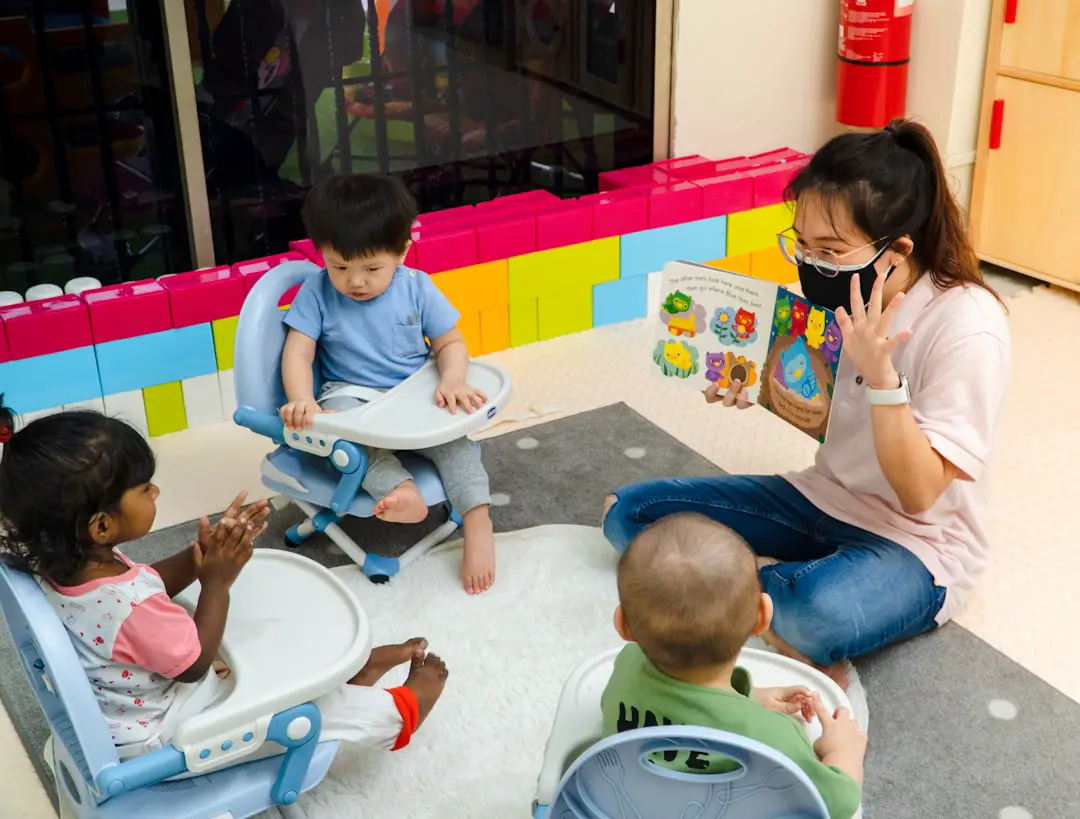
After exploring the vast landscape of teaching strategies for early childhood education, it’s clear that no single approach holds all the answers. Instead, the magic lies in blending evidence-based methods like play-based learning, inquiry, and culturally responsive teaching to create a rich, engaging, and inclusive classroom environment. Our team at Teacher Strategies™ has seen firsthand how combining these strategies—while keeping the child’s unique needs front and center—leads to joyful, confident learners ready to take on the world.
Remember the question we teased earlier: How do you mix multiple philosophies without losing your sanity? The answer is simple but powerful—focus on the child, stay flexible, and keep learning yourself. Whether you’re setting up a cozy reading nook or integrating STEM tinkering labs, your adaptability and passion make all the difference.
If you’re looking to enhance your toolkit, consider incorporating trusted edtech tools like ABCmouse or Khan Academy Kids, and don’t forget to engage families as co-teachers—they’re your classroom’s secret weapon! Finally, ongoing professional development through micro-credentials and vibrant educator communities will keep your strategies fresh and effective.
In short, early childhood teaching strategies are a dynamic, evolving art and science. Embrace the journey, experiment boldly, and watch your little learners thrive.
Recommended Links
-
ABCmouse Early Learning Academy:
Amazon | ABCmouse Official Website -
Khan Academy Kids:
Amazon | Khan Academy Kids Official Website -
Toca Life Apps:
Amazon | Toca Boca Official Website -
Books on Early Childhood Teaching Strategies:
FAQ

What are the most effective teaching strategies for promoting learning in early childhood education?
The most effective strategies are those that respect children’s developmental stages and individual differences. Play-based learning tops the list because it naturally engages children’s curiosity and creativity, making learning joyful and meaningful. Inquiry and project-based learning foster critical thinking and problem-solving skills. Additionally, strategies like Montessori practical life activities and Reggio Emilia-inspired approaches encourage independence and community connection. The key is to use a flexible, child-centered approach that adapts to each learner’s needs.
Read more about “34 Game-Changing Learning Strategies for Students & Teachers (2025) 🚀”
How can teachers create an engaging and interactive learning environment for young children?
Creating an engaging environment starts with thoughtful classroom design—spaces that invite exploration, such as cozy reading nooks, sensory tables, and STEM tinkering stations. Incorporating multi-sensory materials and hands-on activities keeps children actively involved. Teachers should also foster positive relationships and use open-ended questions to spark curiosity. Importantly, involving families as partners and reflecting cultural diversity in materials and activities ensures children feel valued and motivated.
What role do play-based learning and hands-on activities play in teaching strategies for early childhood education?
Play-based learning and hands-on activities are the cornerstones of early childhood education. They allow children to explore concepts at their own pace, develop social skills, and build executive functions like self-regulation and planning. According to NAEYC, play supports cognitive, emotional, and physical development simultaneously, making it an efficient and natural learning method. These strategies also encourage creativity and resilience, essential traits for lifelong learning.
What are some evidence-based teaching strategies that support social-emotional development in early childhood classrooms?
Social-emotional development thrives in environments where children feel safe, respected, and understood. Evidence-based strategies include:
- Conscious Discipline, which teaches self-regulation and emotional control through structured routines and positive language.
- Collaborative group activities that build empathy, communication, and cooperation.
- Trauma-informed practices that recognize and respond to children’s emotional needs sensitively.
- Consistent positive reinforcement and specific feedback help children develop confidence and social skills. These approaches create a nurturing atmosphere where social-emotional growth is woven into daily learning.
Reference Links
- Teaching Strategies® Official Site — Comprehensive early childhood education solutions integrating curriculum, assessment, and professional development.
- National Association for the Education of Young Children (NAEYC) — Developmentally Appropriate Practice and effective teaching strategies.
- Athena Careers – Teaching Strategies for Early Childhood Education — Overview of key teaching strategies and career pathways.
- Montessori Method Overview
- Reggio Emilia Approach
- HighScope Educational Research Foundation
- Conscious Discipline
- Tools of the Mind
- Khan Academy Kids
- ABCmouse Early Learning Academy
We hope this deep dive into early childhood teaching strategies has sparked your curiosity and equipped you with practical ideas to try tomorrow! Remember, teaching young children is as much an art as it is a science—so keep experimenting, reflecting, and growing alongside your little learners. 🚀




